Introduction
One of the first methods of providing branch connections was to stub a branch line into a run. Sometimes a pad would also be used to reinforce the connections. The figure below shows a header with pad-reinforced branch connections. Although tees and extrusions have generally taken the place of reinforced branch connections, an example calculation is presented for the occasional instance where the designer may want to use this type of connection.
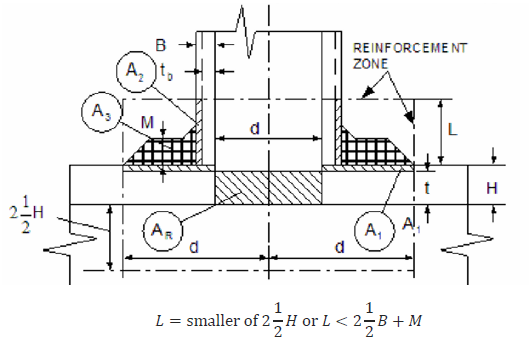
Nomenclature:
Refer to figure for a physical representation of the applicable terms.
𝐴𝑅 = (𝑡𝑟𝐷𝑜),Required reinforcement area
𝐴𝑝 = 𝐴1+𝐴2+𝐴3, Required reinforcement area of
𝐴1 = 𝐷𝑜(𝑇𝑟−𝑡𝑟), The area lying within the reinforcement zone resulting from any excess thickness available in the run wall.
𝐴2 = 2𝐿(𝑇𝑏−𝑡𝑏), The area lying within the reinforcement zone resulting from any excess thickness available in the branch pipe.
𝐴3 = 𝑡𝑝(𝑑𝑝−𝑑), The area lying within the reinforcement zone resulting from the addition of a pad of branch reinforcement member.
𝑑 = Outside diameter of branch pipe(in)
𝑑𝑐 = Corroded internal diameter of branch pipe(in)
𝑑𝑝 = Outside diameter of the reinforcement pad(in)
𝐷 = Outside diameter of run(in)
𝐷𝑐 = Corroded internal diameter of run(in)
𝐷𝑜 = Corroded internal diameter of extruded outlet measured at the level of outside surface of run(in)
𝐸 = Longitudinal Joint Factor
𝐹 = Design Factor
𝑇 = Temperature derating factor
𝐿 = Height of the reinforcement zone. L is the lesser of: (1). 2.5 𝑇𝑏+𝑡𝑝 or (2). 2.5𝑇𝑟
𝑃 = Design pressure of the branch connection
𝑆 = Yield strength of the component being considered(i.e.run,branch,pad)
𝑡𝑏 = The required thickness of the branch pipe according to the steel pipe design formula, 𝑡𝑏 = 𝑃𝑑/2𝑆𝐹𝐸𝑇 but not including any thickness for corrosion.
𝑇𝑏 = Actual thickness of the run wall, not including corrosion allowance(in)
𝑡𝑟 = The required thickness of run according to the steel pipe design formula, 𝑡𝑟 = 𝑃𝐷/2𝑆𝐹𝐸𝑇, but not including any thickness for corrosion.
𝑇𝑟 = Actual thickness of the run wall, not including corrosion allowance
𝑡𝑝 = The required thickness of the reinforcing pad
Case Guide
Part 1: Create Case
- Select the Reinforcement of Welded Branch Connection application in the Facilities Module
- To create a new case, click the “Add Case” button
- Enter Case Name, Location, Date and any necessary notes.
- Fill out all required parameters.
- Make sure the values you are inputting are in the correct units.
- Click the CALCULATE button to overview results.
Input Parameters
- Design Properties
- Design Factor F
- Temperature Deration Factor T
- Operating Pressure
- F – Design Factor
- T – Temperature Derating Factor
- Header Properties
- M – Thickness of the added reinforcement
- D – Outside Diameter of the Header
- H- Nominal Wall thickness of the Header
- Specified Minimum Yield Strength
- E- Longitudinal Joint Factor
- Branch Properties
- Db – Outside Diameter of the Branch
- B – Nominal Wall thickness of the Branch
- Specified Minimum Yield Strength
- E- Longitudinal Joint Factor
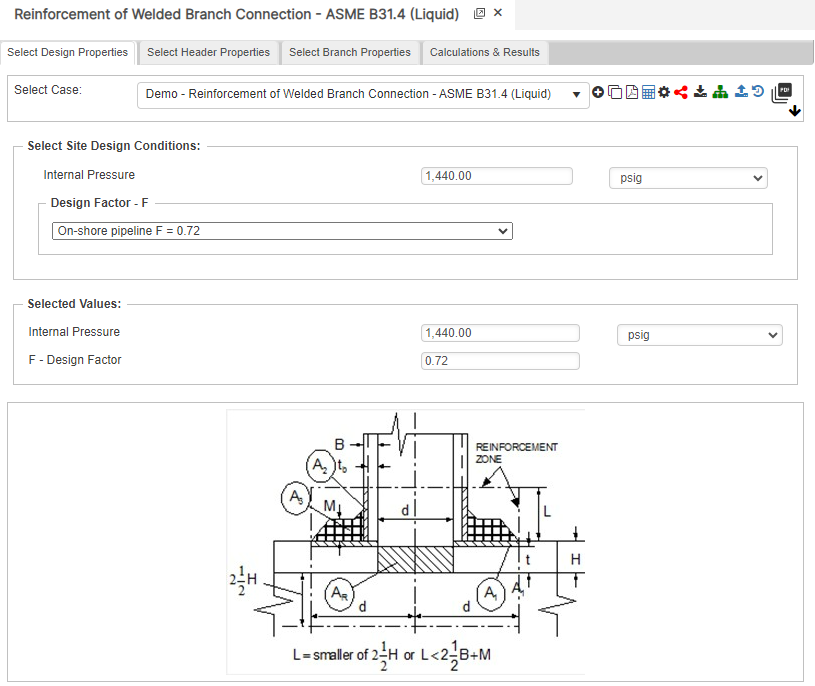
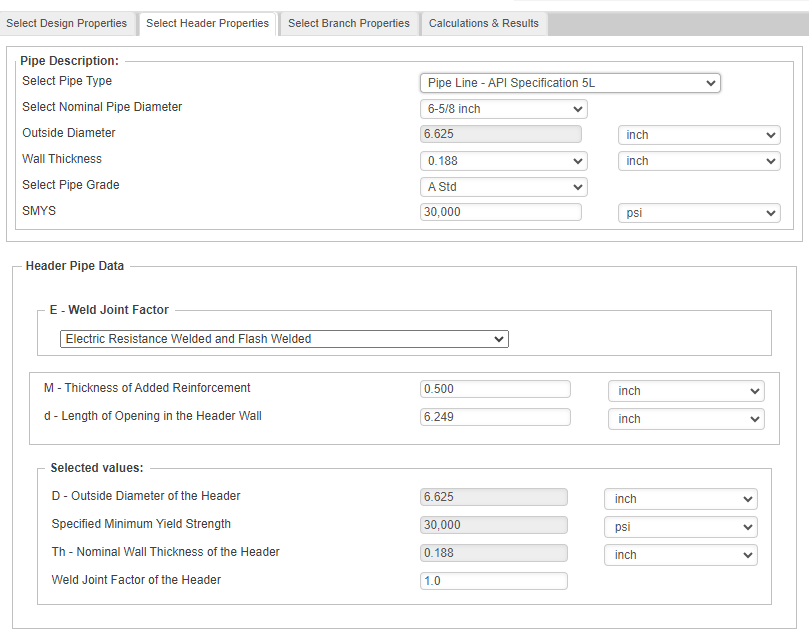
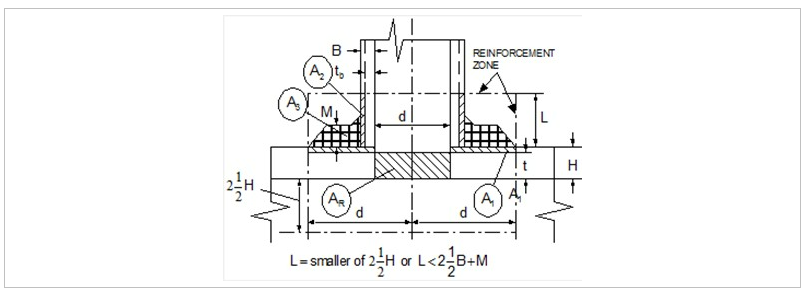
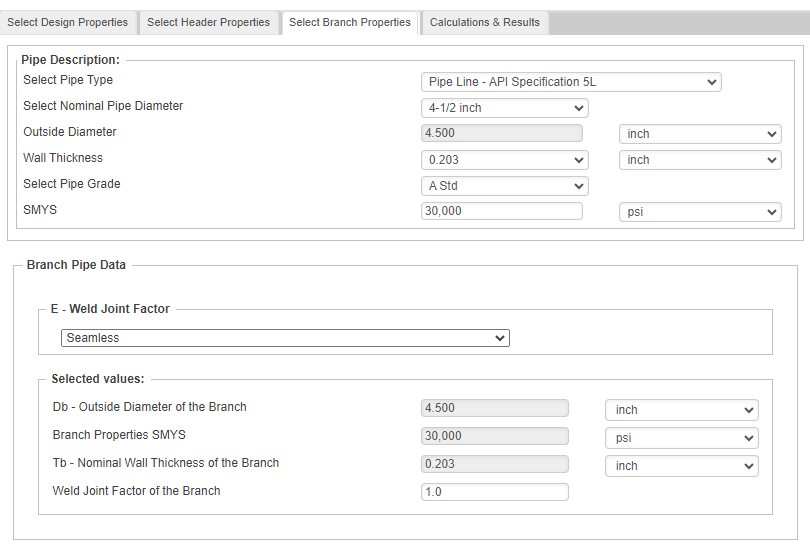

Part 2: Outputs/Reports
- If you need to modify an input parameter, click the CALCULATE button after the change.
- To SAVE, fill out all required case details then click the SAVE button.
- To rename an existing file, click the SAVE As button. Provide all case info then click SAVE.
- To generate a REPORT, click the REPORT button.
- The user may export the Case/Report by clicking the Export to Excel icon.
- To delete a case, click the DELETE icon near the top of the widget.
Results
- th – Design Wall Thickness of the Header
- tb – Design Wall Thickness of the Branch
- A1 – Reinforcement Provided
- A2 – Effective Area in Branch/Outlet
- AR – Required Reinforcement
- Aa – Available Reinforcement
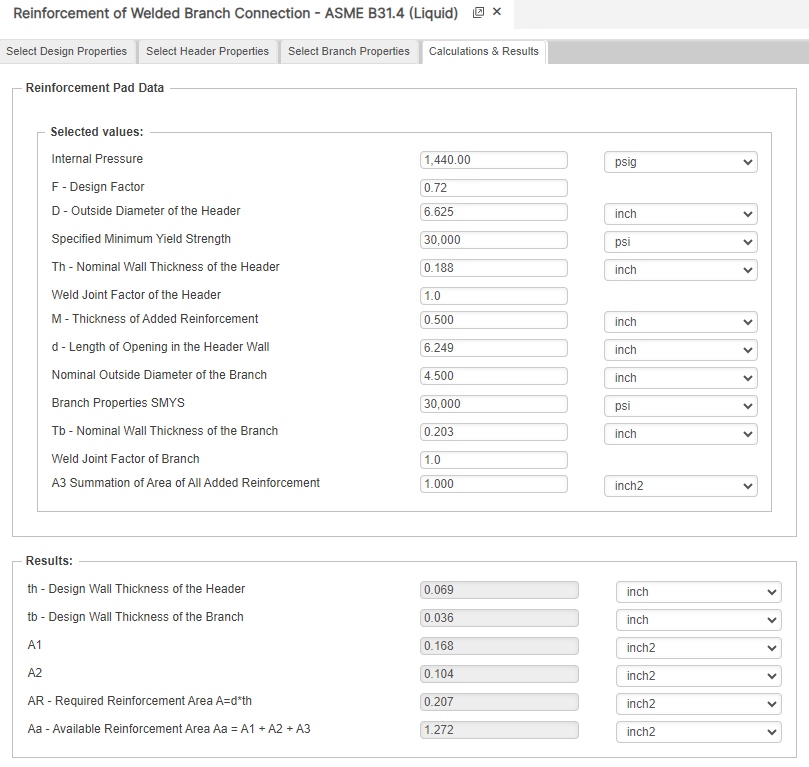
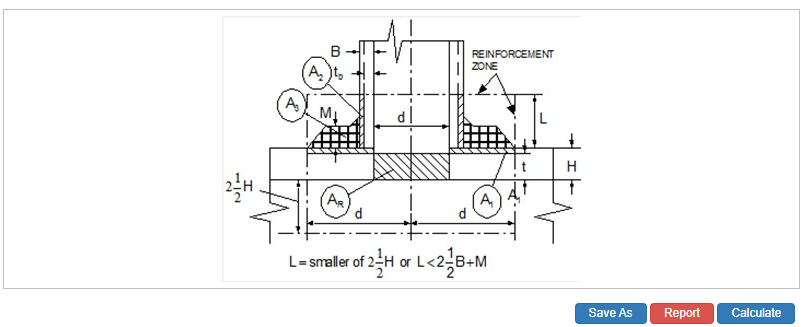
References
- ASME – Boiler and Pressure Vessel Code, Section VIII
- API – RP 520 Part 2
- ASME B31.8 Gas Transmission and Distribution Piping Systems
- ASME B31.3, B31.4 and B31.8 – Full Encirclement Sleeves (See Appendices)
Appendix
Even though Technical Toolboxes does not provide software for a full-encirclement reinforcing saddles, many operators use them to provide reinforcement for branch outlets in accordance with ASME B31.3, B31.4, B31.8 and other applicable design codes. Full-encirclement reinforcing saddles are designed to fully encircle the run pipe however; they are not designed to be pressure retaining devices. To avoid gas entrapment during welding and to prevent pressure containment, should a leak develop underneath the saddles; these saddles should be provided with a vent to allow escaping product.
A typical field applied Full Encirclement Reinforcement Weldment Saddle is shown below:
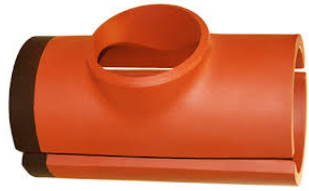
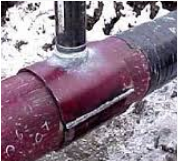
FAQ
-
Validation check: Reinforcement of Welded Branch Connection?
This table highlights the list of validation checks that are in effect in the PLTB Gas > Pipeline Facilities> Reinforcement of Welded Branch Connection – ASME B31.8 calculation. Check Out
-
Orifice Coefficient for Hot Tap Sizing?
When a compressible fluid, such as natural gas or air, is passed through an orifice, the rate of flow is determined by the area of the orifice opening; the absolute upstream pressure is 𝑃1; and the absolute downstream pressure is 𝑃2: unless the ratio 𝑃2/𝑃1. equals or is less than the critical ratio. When 𝑃2/𝑃1 equals or is less than the critical ratio downstream pressure no longer effects rate of flow through the orifice, and flow velocity at the vene contracta is equal to the speed of sound in that fluid under that set of condition. This is commonly referred to as critical or sonic flow. Orifice equations are therefore classified as “sonic” or “subsonic” equations. Check Out
-
How is Required Area calculated for Branched Weld Connection?
The calculation is using the following is the equation that we use for A3 – REQUIRED AREA
A3 = Ar – A1-A’2
where:
Ar = Reinforcement Required
A1= Reinforcement Provided
A’2 = Corrected Effective Area
